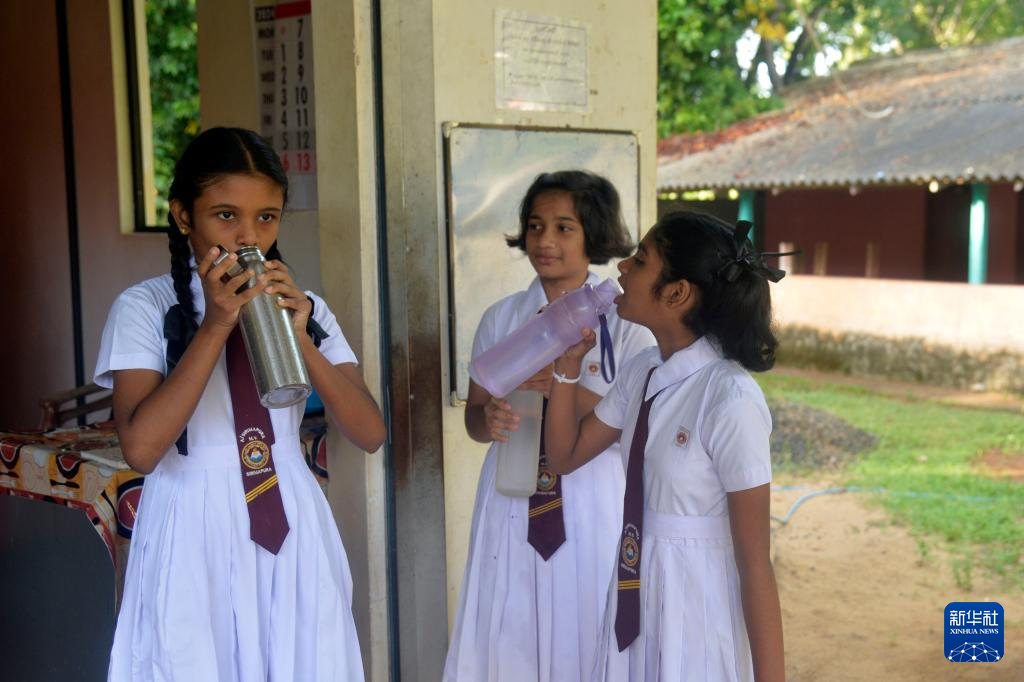 On October 2nd, in the village of Nidiya in the central northern region of Sri Lanka, students were drinking water next to a Chinese assisted drinking water facility. Xinhua News Agency (Photo by Jia Yang Samira)
On October 2nd, in the village of Nidiya in the central northern region of Sri Lanka, students were drinking water next to a Chinese assisted drinking water facility. Xinhua News Agency (Photo by Jia Yang Samira)
Colombo, October 8 (Xinhua) — Providing Local People with “Safe Water” -31 Visits of Chinese Scientists to Sri Lanka
Xinhua News Agency reporter Chen Dongshu and Wu Yue
In the drawer of the office sent by Wei Yuan, director of the Water Pollution Control Laboratory of the Ecological Environment Research Center of the Chinese Academy of Sciences, there is a special thank-you letter: the kraft paper envelope is stamped with postmarks from many places, and the dense Sri Lankan Sinhalese alphabet is followed by the autographs and handprints of all villagers. The letter reads, “The villagers of Nidia sincerely thank Professor Wei Yuan for his help, and we finally have access to safe and delicious drinking water
Wei Yuansong’s connection with Sri Lanka began in August 2013. One day, he received a plea for help email from Sri Lanka. The sender, Dr. Wellegod, once participated in the “Water and Sanitation” foreign aid training course of the Chinese Academy of Sciences. He asked whether he could cooperate based on the water treatment technology taught in the class to solve the chronic kidney disease (CKDu) problem related to drinking water in Sri Lanka.
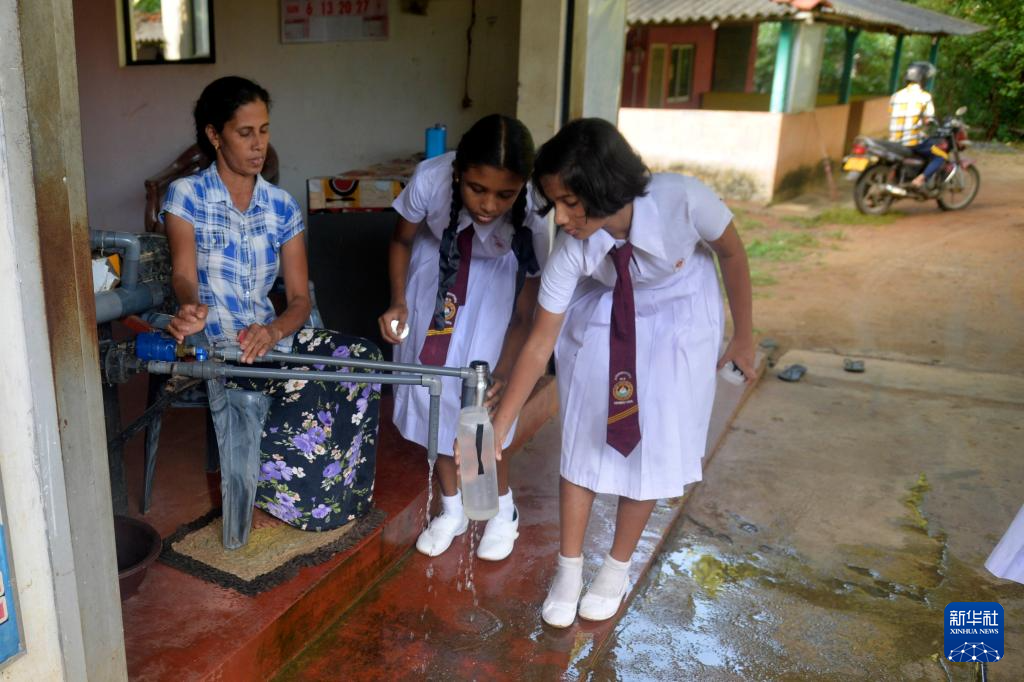 On October 2nd, in the village of Nidiya in the central northern region of Sri Lanka, students were queuing up in front of a drinking water facility built with Chinese aid to fetch water. Xinhua News Agency (Photo by Jia Yang Samira)
On October 2nd, in the village of Nidiya in the central northern region of Sri Lanka, students were queuing up in front of a drinking water facility built with Chinese aid to fetch water. Xinhua News Agency (Photo by Jia Yang Samira)
At that time, data showed that there had been over 40000 CKDu patients in Sri Lanka since 1990. Preliminary research by the World Health Organization indicates that the disease is highly correlated with the quality of groundwater consumed by local residents.
This major livelihood issue has since entered the vision of Chinese scientists. In August 2014, Wei Yuansong set foot on the land of Sri Lanka for the first time and began a “trial and error” research journey: he rented a car and searched for directions with Weilegode, and traveled to the ward for several hours every day to conduct investigations; Visiting households one by one, gathering villagers to inquire about their condition, and often receiving cold treatment, even unable to drink a glass of water at the end of the day; I wanted to take samples on site but was stopped by villagers who didn’t know where to go. I tried my best but ended up covered in mosquito bites
“Before, people from some countries also visited here. At that time, many local people thought that Chinese people, like other countries, only came to write articles and send papers, not to really help them,” Wei Yuansend said.
After preliminary research and communication and coordination between China and Sri Lanka, in March 2015, the Chinese Academy of Sciences signed a memorandum of cooperation with the Ministry of Urban Development and Water Supply and Drainage of Sri Lanka (now known as the Ministry of Water Supply and Drainage), officially deciding to carry out research cooperation on CKDu root cause tracing and drinking water safety assurance. Afterwards, Wei Yuansong frequently traveled between the two countries and, together with more Chinese scientists, carried out a series of sincere and solid research collaborations in Sri Lanka.
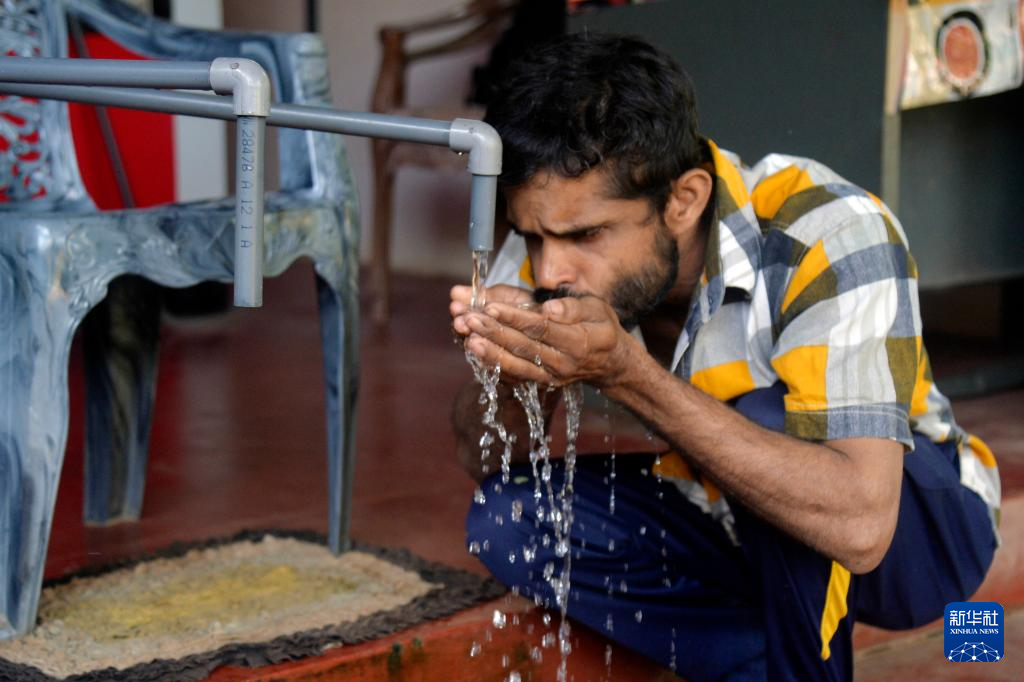 On October 2nd, villagers were drinking water in front of a Chinese assisted drinking water facility in Nidiya Village, central northern Sri Lanka. Xinhua News Agency (Photo by Jia Yang Samira)
On October 2nd, villagers were drinking water in front of a Chinese assisted drinking water facility in Nidiya Village, central northern Sri Lanka. Xinhua News Agency (Photo by Jia Yang Samira)
Our main partner, the Sri Lankan Ministry of Water Supply and Drainage, has changed 9 permanent secretaries, and I have come once for every new one. Now, we have not only received recognition from officials at all levels, but also gained a lot of friendship from the people, “Wei Yuansong said.
Since September 2017, the Chinese Academy of Sciences has adopted technologies such as nanofiltration and electrodialysis to build four drinking water demonstration projects in the CKDu ward of Sri Lanka through joint research and corporate donations, providing safe drinking water for more than 5000 villagers and 1300 primary school students in the area. In November 2017, the foundation of the Zhongsi Water Center project was laid; In October 2021, the China Sri Lanka Water Center Research Complex, built with the assistance of the Ministry of Commerce of China, was officially put into use; As of now, the center has received policy or funding support from multiple relevant departments in Sri Lanka, and the two sides have signed six government level and research institute level bilateral cooperation memorandums, establishing one national level and one institute level cooperation platform.
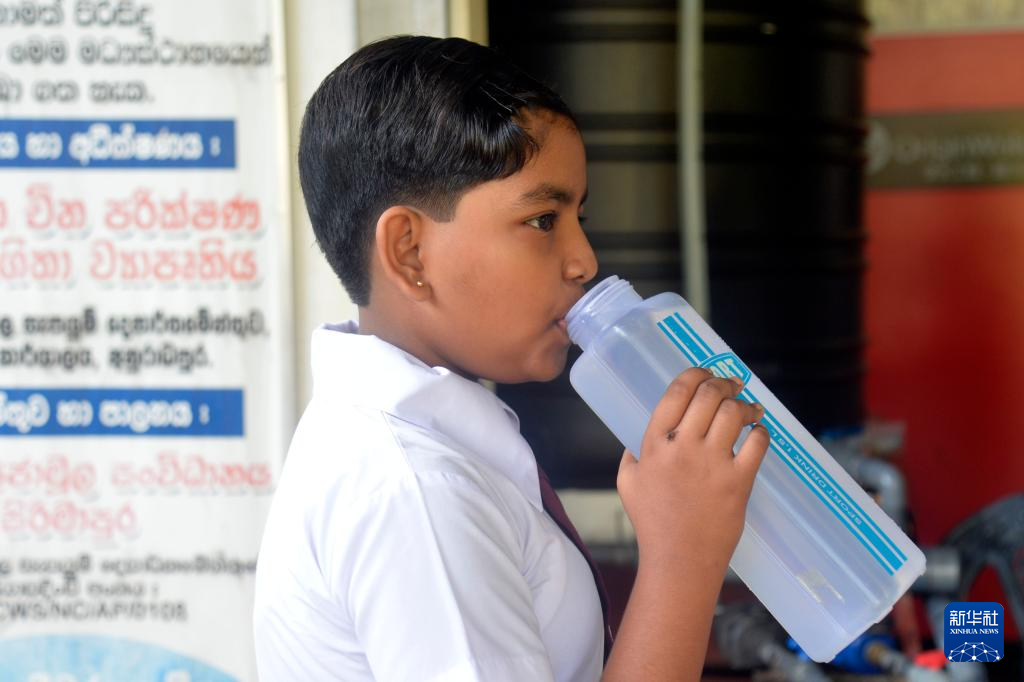 On October 2nd, in the village of Nidiya in the central northern region of Sri Lanka, students were drinking water next to a Chinese assisted drinking water facility. Xinhua News Agency (Photo by Jia Yang Samira)
On October 2nd, in the village of Nidiya in the central northern region of Sri Lanka, students were drinking water next to a Chinese assisted drinking water facility. Xinhua News Agency (Photo by Jia Yang Samira)
The water cooperation project is also continuously cultivating local scientific and technological talents. The Zhongsi Water Center has trained more than 30 medical staff, 20 kidney disease investigators, 20 water management professionals, and 30 master’s and doctoral students for the local area. Two CKDu related research papers jointly authored by China and Sri Lanka were awarded the Sri Lankan Presidential Science Award in 2023 and 2024, respectively, by Wei Yuan’s research team.
The local people now trust Chinese scientists the most, and many people bow and thank them as soon as they see them. There are also many villagers with kidney disease who say that they no longer need to go to the hospital for several years because of the help of Chinese scientists, “said Titus Kurey, a doctoral student trained at the Zhongsi Water Center.
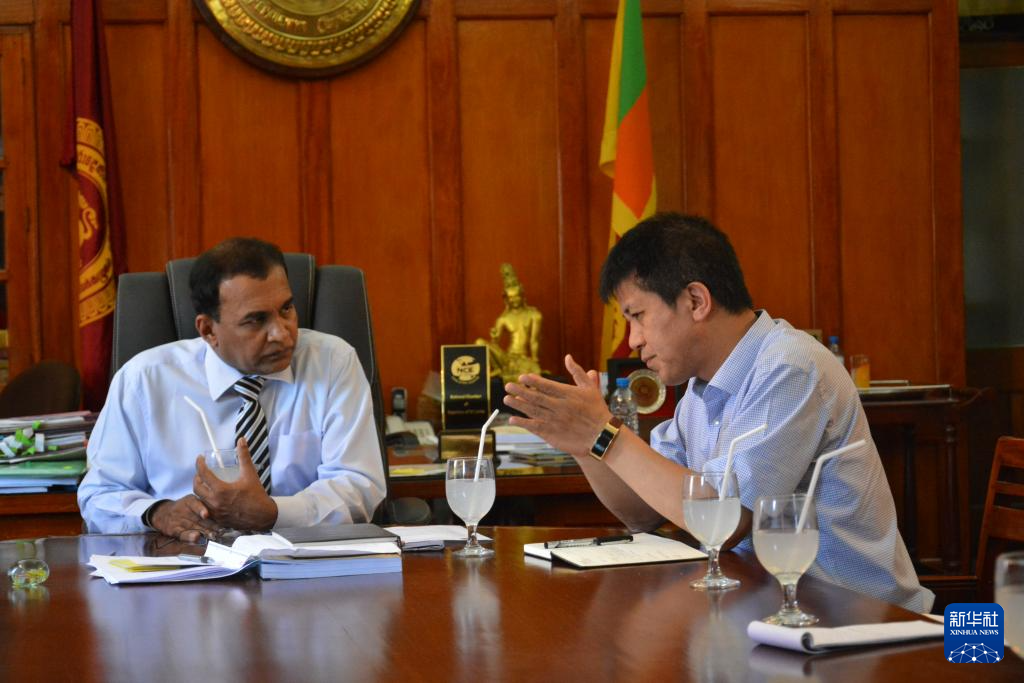 On March 22, 2017, Wei Yuanxun (right), director of the Water Pollution Control Laboratory of the Ecological Environment Research Center of the Chinese Academy of Sciences, visited Upur Dizanayak, then president of the University of Peradnya in Sri Lanka in Kangti, Sri Lanka (data photo). Shen Jizhong
On March 22, 2017, Wei Yuanxun (right), director of the Water Pollution Control Laboratory of the Ecological Environment Research Center of the Chinese Academy of Sciences, visited Upur Dizanayak, then president of the University of Peradnya in Sri Lanka in Kangti, Sri Lanka (data photo). Shen Jizhong
In July of this year, the 9th China Sri Lanka Joint Symposium was held in the research complex building of the China Sri Lanka Water Center. The discussion content of this year’s seminar has expanded from water technology cooperation to areas such as climate change and sustainable development of marine environment. The participants have also expanded from scientists from China and Sri Lanka to experts and scholars from nearly ten countries including the United States, Canada, and Maldives.
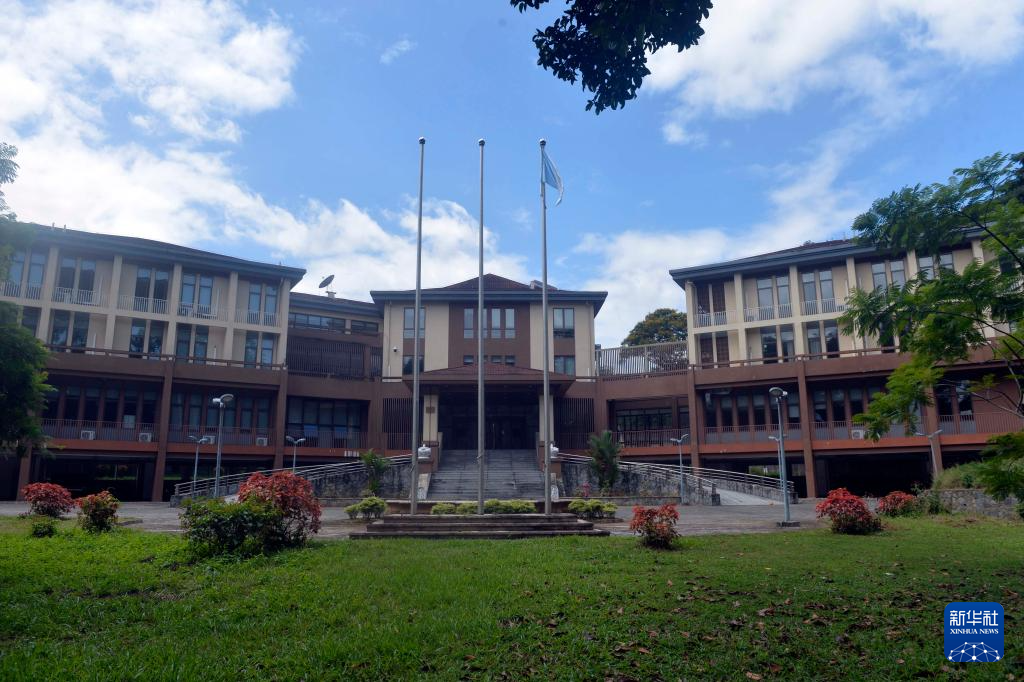 This is a photo taken on September 26th in Kandy, Sri Lanka of the China Sri Lanka Water Center Research Complex, which was built with assistance from the Chinese Ministry of Commerce. Xinhua News Agency (Photo by Jia Yang Samira)
This is a photo taken on September 26th in Kandy, Sri Lanka of the China Sri Lanka Water Center Research Complex, which was built with assistance from the Chinese Ministry of Commerce. Xinhua News Agency (Photo by Jia Yang Samira)
During an interview with Xinhua News Agency at the forum, Wei Yuansong couldn’t help but sigh that over the past 11 years, with the sincere efforts of Chinese scientists, each email has been transformed into concrete cooperation, bringing tangible health and well-being to the people of Sri Lanka.
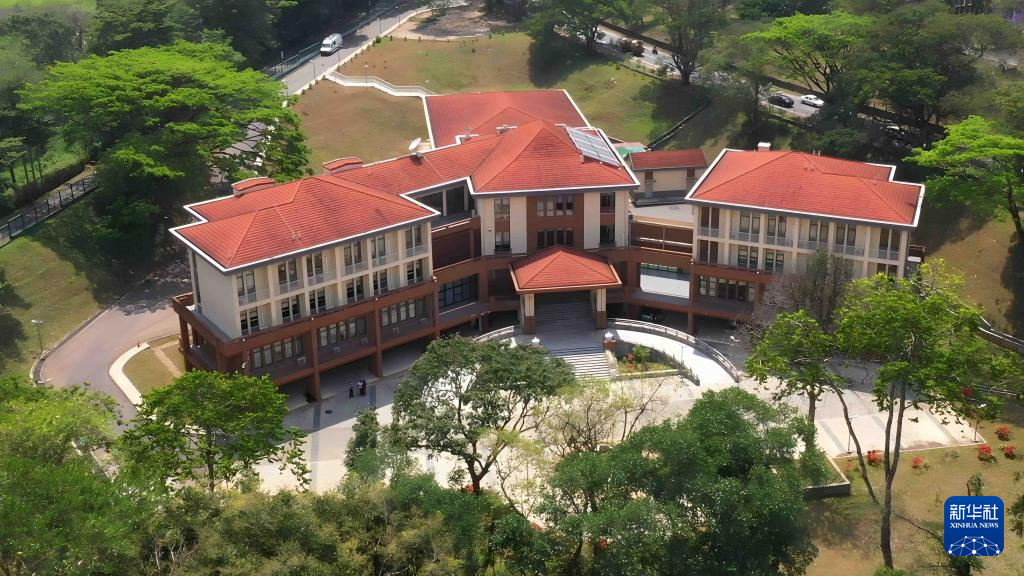 This is a photo taken on September 26th in Kandy, Sri Lanka of the China Sri Lanka Water Center Research Complex, which was built with assistance from the Chinese Ministry of Commerce (drone photo). Xinhua News Agency (Photo by Jia Yang Samira)
This is a photo taken on September 26th in Kandy, Sri Lanka of the China Sri Lanka Water Center Research Complex, which was built with assistance from the Chinese Ministry of Commerce (drone photo). Xinhua News Agency (Photo by Jia Yang Samira)
“This is my 31st visit to Sri Lanka. We have laid the foundation from 0 to 1, and the future cooperation will be from 1 to infinity. China has achieved a major transformation from a participant in global environmental governance to a leader. We hope that scientific and technological cooperation will bring more benefits to the people of Sri Lanka, and make this project a model of international cooperation along the the Belt and Road,” Wei Yuanjian said.
